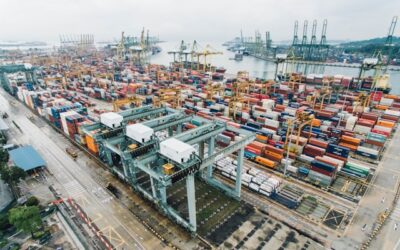The shipping industry is heading for major changes in 2025. Long-standing alliances like 2M will dissolve, making way for new collaborations such as the Gemini Cooperation and the Premier Alliance. These shifts are more than administrative reshuffles and will directly impact Australian importers, from freight rates to service reliability.
For businesses relying on international shipping, now is the time to understand what these changes mean and plan accordingly.
Shifts in global shipping alliances
- Existing alliances winding down
-
- 2M alliance: Maersk and MSC, two of the largest carriers globally, will part ways in January 2025. Both companies aim to pursue independent strategies, potentially affecting capacity and reliability on key trade routes.
- THE alliance: Members like Hapag-Lloyd, ONE and Yang Ming are restructuring, with some preparing to join other collaborations.
- New partnerships emerging
-
- Gemini Cooperation: Launching in January 2025, this partnership between Maersk and Hapag-Lloyd focuses on reliability and sustainability. Their goal is to achieve 90% schedule reliability, a significant improvement in an industry often impacted by delays.
- Premier Alliance: From February 2025, HMM, ONE and Yang Ming will prioritise key trade routes, including Asia-Europe and trans-Pacific lanes. Australian importers relying on these corridors could see changes in rates and capacity.
What this means for Australian importers
The new alliances and dissolutions bring both challenges and opportunities.
- Service reliability: With the Gemini Cooperation aiming for improved schedule consistency, importers may finally see more predictable lead times. This would help businesses better manage inventory and reduce costly delays.
- Freight rates: As capacity is realigned, rates may fluctuate in the short term. However, increased competition within the new alliances could help stabilise costs over time.
- Sustainability practices: Carriers are making eco-friendly operations a key priority. For importers, this offers an opportunity to integrate sustainable practices into their supply chains while responding to consumer and regulatory demands.
- Temporary disruptions: As alliances adjust their routes and operations, there may be short-term service disruptions. Businesses will need to remain flexible during this transition.
Adapting to the changes
For Australian importers, preparation will be key to staying competitive. These strategies can help your business adjust:
- Diversify shipping options
Do not rely on a single carrier or trade route. Build relationships with multiple carriers to ensure flexibility in case of delays or rate fluctuations. - Monitor alliance developments
Stay informed about alliance announcements and assess how changes to key trade routes may impact your supply chain. Regularly review carrier updates and engage with industry news to stay ahead. - Work with logistics experts
Collaborating with freight forwarders or consultants can help you optimise routes, manage costs, and minimise risks. Their insights will also be invaluable as trade regulations evolve. - Prioritise sustainability
Partner with carriers focused on reducing emissions. This not only supports global environmental goals but can enhance your brand’s reputation with increasingly eco-conscious consumers.
Why these changes need your action
The dissolution of 2M and the emergence of new alliances are not just industry news and are a signal for businesses to act. From my experience, transitions like these often lead to short-term disruptions but can bring long-term benefits for those prepared.
Sustainability is becoming a central focus for the shipping industry, driven by increasing regulatory pressures and growing demand for eco-friendly practices. Importers who adapt their supply chains to incorporate greener strategies now will be better positioned to meet compliance requirements and respond to market expectations.
Rate fluctuations are inevitable during this period of adjustment, but businesses that prioritise flexible shipping strategies and build strong carrier relationships will be better equipped to navigate these shifts and remain resilient.
Looking ahead
Change in the shipping industry is constant, but 2025 marks one of the most significant shifts in recent years. Australian importers who adapt quickly and plan strategically can use these changes to their advantage, improving reliability, managing costs and building resilient, sustainable supply chains.




